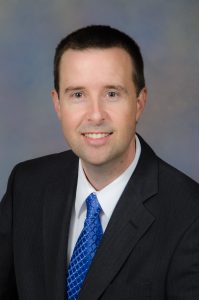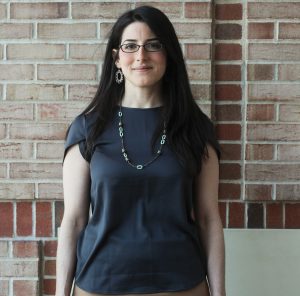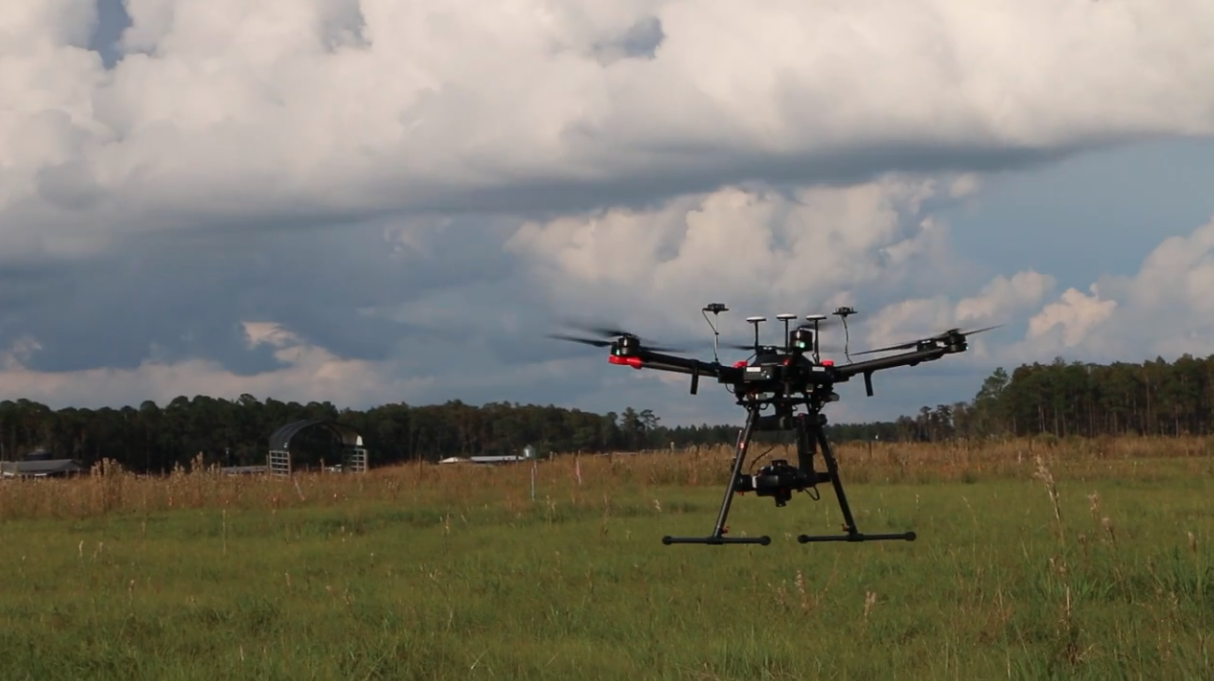The National Science Foundation recently awarded an Engineering Research Center grant for $26 million to a group of four universities, including the University of Florida. The ERC will study ways to use the Internet of Things (IoT) and artificial intelligence (AI) to enhance precision agriculture that will provide maximum crop yield while using the minimum amount of water, energy, and chemicals. Faculty from the Herbert Wertheim College of Engineering will play a pivotal role in providing data communications via IoT and application of AI to problems facing the agricultural sector.
David Arnold, George Kirkland Engineering Leadership Professor in the Department of Electrical and Computer Engineering is co-principal investigator on the NSF grant and director of the UF site. Alina Zare, professor of electrical and computer engineering, heads up the Machine Learning & Sensing Lab at UF. Both of these faculty members are deeply involved in IoT and AI and will be using their skills to contribute to the success of this vital project. Arnold and Zare got together to answer some questions about the resources engineering brings to precision agriculture and how it will impact the society of the future.
What is the current state of affairs in engineering for agriculture?
 DR. ARNOLD: Agriculture is actually a pretty technologically sophisticated environment today. There is a long history of farmers, independent of their particular crops, where they’re always looking to adopt the latest technologies to improve crop production. In the 20th century, the industrial revolution mechanized farming, just as much as manufacturing or transportation. Today, stemming from the fields of electrical engineering and computer science, we find that sensor networks, artificial intelligence and machine learning are being used to make systems smarter, more efficient, and more customized to the user; and there’s a push to move these kinds of ideas into agricultural applications to improve farming.
DR. ARNOLD: Agriculture is actually a pretty technologically sophisticated environment today. There is a long history of farmers, independent of their particular crops, where they’re always looking to adopt the latest technologies to improve crop production. In the 20th century, the industrial revolution mechanized farming, just as much as manufacturing or transportation. Today, stemming from the fields of electrical engineering and computer science, we find that sensor networks, artificial intelligence and machine learning are being used to make systems smarter, more efficient, and more customized to the user; and there’s a push to move these kinds of ideas into agricultural applications to improve farming.
What is the Engineering Research Center’s vision for agriculture in the future?
DR. ARNOLD: The way we hope to help the farmers is by efficiently collecting large amounts of data and applying machine learning to analyze it and provide solutions for the farmers. For example, today a farmer may have 10 soil moisture sensors on a hundred acre plot of land. What we want to do is obtain data down to the individual row of strawberries or the individual citrus tree. Using both on-the-ground sensors and remote sensing technologies, we will collect data on the soil conditions such as moisture and pH. We will also collect data about the environment, including things such as temperature, humidity, and general weather patterns. Then there is data that will need to be collected about the crops themselves – seed germination rates, plant sizes, growth rates, fruit maturity, etc. With the help of AI, we can move from just collecting data to actually providing actionable information and guidance to a farmer or a whole region of farmers. Our aim is to help farmers minimize the use of energy, water and fertilizers while producing to the maximum amount of crops.
What kinds of challenges are engineers and farmers facing?
 DR. ZARE: Population growth is the cause of the challenges we are looking at. We have more people on the planet, and we need to feed them all. We have shrinking amounts of arable land that are available for crop production due to population growth. We have effects of climate change and other things that affect crops, whether we’re looking at fires in California or new pests or diseases attacking citrus trees in Florida. There are many other external factors that farmers would like to address to be more resilient and adaptive to the world that’s changing around them. If farmers can produce more crops with less water, fuel, and fertilizer, farming can be made more economically profitable with lower environmental impact.
DR. ZARE: Population growth is the cause of the challenges we are looking at. We have more people on the planet, and we need to feed them all. We have shrinking amounts of arable land that are available for crop production due to population growth. We have effects of climate change and other things that affect crops, whether we’re looking at fires in California or new pests or diseases attacking citrus trees in Florida. There are many other external factors that farmers would like to address to be more resilient and adaptive to the world that’s changing around them. If farmers can produce more crops with less water, fuel, and fertilizer, farming can be made more economically profitable with lower environmental impact.
What aspect of the ERC’s research will you be addressing here at UF?
DR. ARNOLD: From the engineering perspective, I will be concentrating on providing power sources to run everything from a micro sensor to a fleet of aerial drones. We will use drones to visualize the field up close, and other members of the ERC are developing waves of what’s being called smart chaff, which sprinkles tiny biodegradable sensors out into the field that can make simple measurements.
If you have a huge terabyte file of all this data you just collected, you now have to transfer that data to be analyzed in the cloud. Part of the ERC’s work will be led by Purdue on improved high bandwidth communication systems that can be deployed out into rural areas.
There are many practical problems to the grand vision, and this is where our engineering technology comes in. Imagine all these sensors and drones that will have nowhere to recharge as there are no electrical outlets in the fields. How can these things gain power? We’re looking at harvesting energy from the local environment, with power levels ranging from microwatts to hundreds of watts. Examples include solar panels in the field or irrigation water running through pipes that could be converted into electricity using small turbine generators. We’re also interested in wireless recharging of ground and aerial robots, keeping in mind the potentially dirty, wet outdoor conditions. Specifically, we might have a solar-powered “charging spot” in the corner of a field; and aerial drones could come in, land, recharge their batteries, and then take off and go back and fly around and collect more data. Then there is the transmission of the data, which needs a power source, too.
In research mode, we’re looking at ways to tap into the power lines, which you see along all the rural farm roads. There are ways that my group is investigating to possibly have a drone go up and perch like birds or hang like bats and recharge from the power line. Of course, there are lots of questions about how usage is tracked and who’s going to pay for that; but imagination and creativity play a large role in engineering research.
DR. ZARE: While Dr. Arnold focuses on hardware, I will be directing the software side of the program at UF. My team of graduate students and I will be developing algorithms that can be applied to analyze the many questions to which farmers are seeking answers. While artificial intelligence handles the collation and organization of all the data about soil, climate, plants, etc., our artificial intelligence and machine learning algorithms will also address questions to all that data and analyze the results and their probabilities. The result of our machine learning efforts will produce an electronic “dashboard” the farmer can use to optimize operations such as determining which parts of his field need more or less water, where fertilizer needs to be applied in what amounts, which seeds perform best, and a host of other operations that will yield the best and largest amount of crops per acre of farm land with the least use of resources.
How will the farmers play a role in the ERC?
DR. ARNOLD: Any NSF engineering research center is not established just to do research and write journal papers, but to actually change the world around us. The problems we are addressing come from the farmers. Even when we were writing this proposal, we were getting very specific input from farmers about what problems they are trying to solve. They are helping guide us and keep us on the right path.
We have representatives of farmers’ and growers’ associations on different oversight committees in the center. Farmers who are interested in joining the center can actually engage through a formal partnership. They will have the ability to come and attend meetings and share their problems and vote on everything down to what projects we actually pursue or what specific field or crop should we look at next. So they’re an important part of the decision making guidance. They have clearly defined problems, and we’re trying to bring technology to solve them.
Will engineers be going out to farms as part of this ERC?
DR. ARNOLD: We have already. We will have an all-hands boot camp to start, where we’ll all come together and learn a little bit about each other’s terminology and nuances. A big part of this is to get engineering tech people who usually work in a nice, clean office out into the field and get their hands dirty and shoes muddy. We also plan to take farmers to campus and show them some advanced new wireless power technology so they have some appreciation of what’s going on in the engineering environment.
What impact will the university’s AI initiative have on your research?
DR. ZARE: Part of this research will involve getting data from all sorts of sources and sensors and at many different scales and resolutions. So you can imagine everything from satellite imagery that’s covering huge swaths of land to drones, to sensors in the field giving point measurements; and all of that data is going to need to be processed to answer the farmers’ questions and do the monitoring and the management. A lot of our analysis work will be very computationally expensive, so the Nvidia upgrades to the Hipergator supercomputer are really good for a lot of the deep learning methodologies and the AI methods that are being used right now. Those methodologies will definitely be applied to the sensor data, particularly as we start getting to this really big scale and have tons of data from every farm. The NVIDIA GPUs will make everything run faster.
There are a large number of questions that will be asked and addressed by the AI algorithms. For example, maybe the farmers are interested in mapping plant health. We could put in all of the satellite imagery and the drone imagery and everything else we collect from the sensors; and perhaps what comes out is a map that is color coded in each area. Then you start bringing in management decision making. You may have a map that says apply nitrogen here but nowhere else, this area is not getting enough water, and that sort of thing.
What are some other outcomes of developing this type of precision agriculture?
DR. ZARE: There has been work on precision agriculture for a long time. It has been centered around questions like fertilizer application, irrigation, and similar factors to boost performance to help save on production costs. However, there are also more complex questions such as how to balance how much yield the farmer can get with not only the cost reduction but also how much run-off goes into the local ground water. Things like that could impact policy. Policymakers may say to the farmer, “We understand this is going to improve your yield by X amount; but if you have too much fertilizer runoff, we have huge algal blooms.” There’s potential for more complex interaction of the farm with the local ecosystem. These questions are not within the scope of the center but putting the technology that comes out of the ERC into place will set the groundwork to start tackling these sorts of challenges.
What impact will precision agriculture and the ERC have on the agricultural workforce?
DR. ARNOLD: The fourth industrial revolution, marked by IoT and AI, is coming; and our center will help produce the agricultural students and engineering students who are at this interface. As new technologies are deployed onto real farms and food production systems, somebody has to understand the farmer, has to understand how sensing works, has to understand the results of AI analysis, etc. That means having everybody educated and on the same page, from the farmers doing the farming to people who know and understand how to deploy the communication systems or make the new batteries or agriculture-specific drones for this particular application, which is a huge undertaking. We’re not talking about creating new farmers, we’re talking about creating people who can do techno farming.
What are the first steps in educating the techno-farming workforce?
DR. ZARE: One thing that is true of applied AI is that it is really hard to make a good AI system if you don’t understand anything about the application area. We are producing excellent students in AI; but, if they don’t know anything about agriculture or plant science, it will be hard for them to get a job and make an impact in that field. In part through this ERC, we will be producing PhD students who have a history of research of applied AI in agriculture and other application fields as well. This will give them the exposure and background needed to make a meaningful impact in those fields. We also have plans to have other courses and projects in AI that use agriculture data to get more students aware of the problems and thinking about them.
DR. ARNOLD: We’re planning everything from certificate programs for university students and agriculture professionals to K-12 outreach, where high school students may come out to the research fields to help us and elementary school children may be going on field trips to the farms. Information will also be provided to the public through the UF/IFAS extension service. We are also working with the Cade Museum on museum-type booths that would inform everyone, including grandparents at the museum with their grandkids. There we have the full circle.
Will the ERC have partnerships with industry?
DR. ARNOLD: I’m the faculty lead on that part of the ERC due to my experience with the MIST Center, which is an industry consortium focused on integrated sensing systems. To succeed in this effort is going to take people who run businesses in all different areas – farming, communication companies, drone makers, battery companies and even public utilities. To bring all these people together and have a forum, interested parties will buy a membership in the center. Like the farmers we spoke about earlier, they too will listen in, lean in and contribute.
Industry partners can also sponsor directed research programs that are affiliated with our overall efforts. For example, if a peanut farmers group wants to sponsor a project, we will help find the right researchers to work on their problems. If a telecommunications company wants to deploy and field test or develop some new hardware and test it out in a real world environment, we’re here to help facilitate that, too.
At the end of the day, there must be companies willing to commercialize these ideas because, as you know, researchers and faculty can only do so much to show what this algorithm can do or what that sensor could do. Private companies will transition our research technology to useful products and applications. There will be many small business opportunities.
Any final comments about this ERC?
DR. ZARE: Agriculture intersects so many parts of our society. If we can make all this information available, helpful and meaningful to the farmers and the producers, we are also helping our society and the wider community in a meaningful way.
DR. ARNOLD: We are going to be the interface with the agricultural community to help them adopt and integrate this new fourth industrial revolution. I’m looking forward to these next steps along the path to progress.

